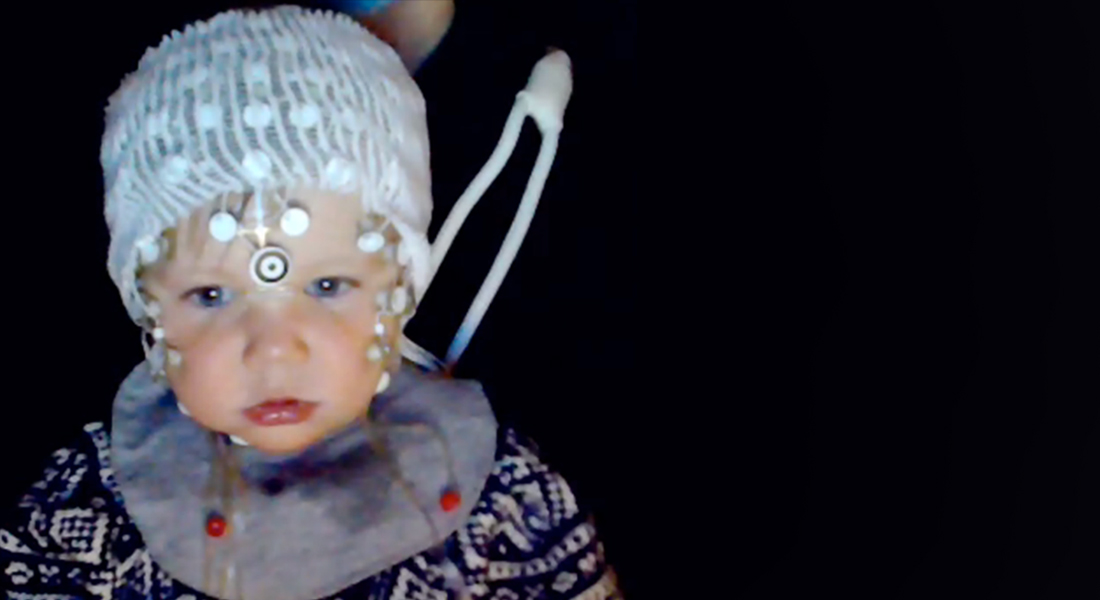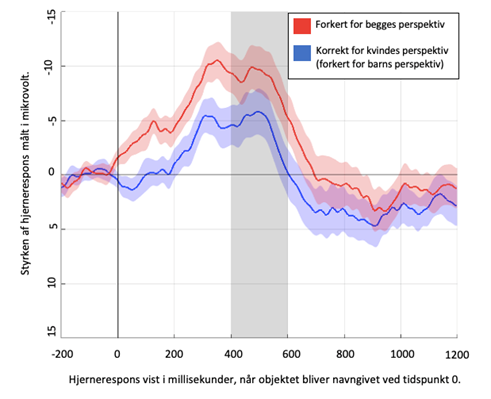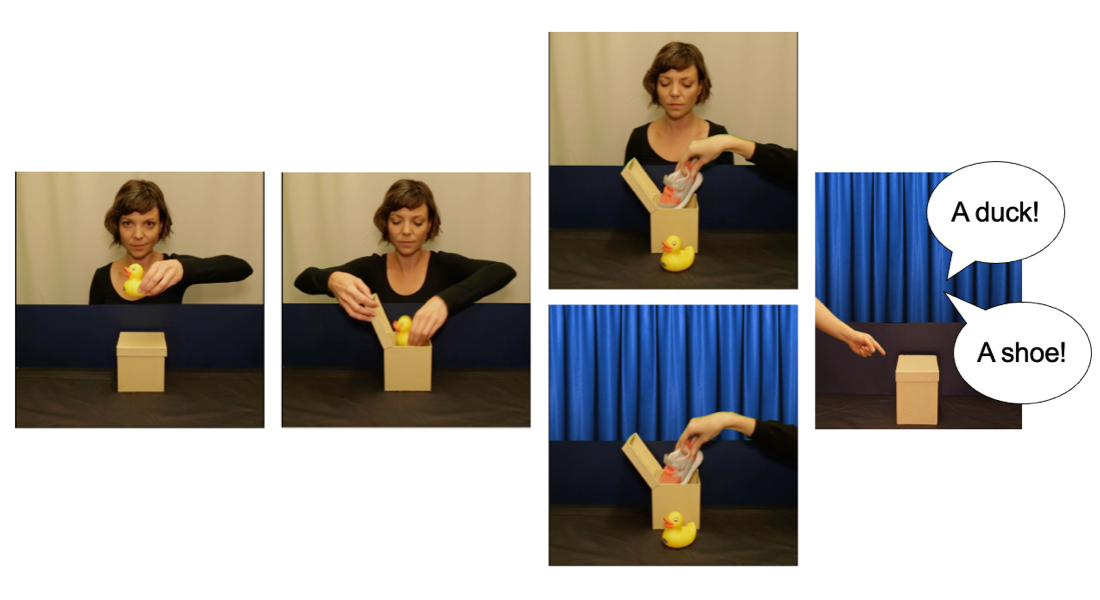What do you think is hidden in the box? And what do I think? - Social n400 research series

In a previous study we have established that babies at this age remember objects that are hidden in a box, and notice if these are labelled incorrectly (e.g., we hide a duck, and then a person points towards the box and calls it a phone). We saw this from their brain responding differently to hearing correct vs. incorrect labels - when there was a mismatch between the hidden object and the word they heard.
In this follow-up study, we probed whether babies notice if something doesn’t make sense for another person. We showed babies videos of a person who put an object in a box. Then she was occluded by a curtain and didn’t see what happened after. Next, (unbeknownst to her) a hand appeared from the side and exchanged the object to another. Finally, another hand pointed to the box, and said a word: “Look, a []”.
This word was always incorrect: it never matched what was actually in the box. But in half of the cases it was correct for the other person as it referred to the first object, which she thought was still in the box.
If babies only consider their own perspective, they should have always shown a mismatch-response. But in fact, we found a smaller mismatch response when the word was correct for the other person.

Thus, the infants showed a more negative brain response when the object was misspelled at time zero when the labelling was incorrect for both the agent and the infant, compared to when it was perceived as correct for the agent but incorrect for the child (see figure). This suggests that babies noticed which words make sense to the other person, and this affected their brain response. We think this is because very young infants pay close attention to the perspective of others to learn about the world around them.

In a final study ongoing study, we probed how much babies consider the other’s perspective by asking if babies notice a mismatch at all if the label is always correct for the other. We modified the previous study: now in half of the cases the person saw the object change and in the other half she did not (see image above). Then babies always heard the label of whichever object the person thought was in there. When she saw the change, this matched what the babies knew was in there. When she did not see the object change, she had a false belief about the object, so the matching label was incorrect for the baby.
Interestingly, we found no difference in infants’ responses, suggesting that in this case they put more weight on the other’s perspective, and don’t differentiate mismatch from their own.
We think the importance of these curious findings is that young infants pay close attention to the perspective of others, and use this to learn about the world around them.
| Dora Kampis PhD in Cognitive Science Assistant Professor - Tenure track dk@psy.ku.dk |
 |
|
PhD, Professor
victoria.southgate@psy.ku.dk |
 |
 |
About the study
The research series Social n400 began in autumn 2021 and was completed in spring 2023
The study is supported by The European Research Council (ERC).
Contact
Dora Kampis
Assistant Professor, tenure track
Centre for Early Childhood Cognition
dk@psy.ku.dk
